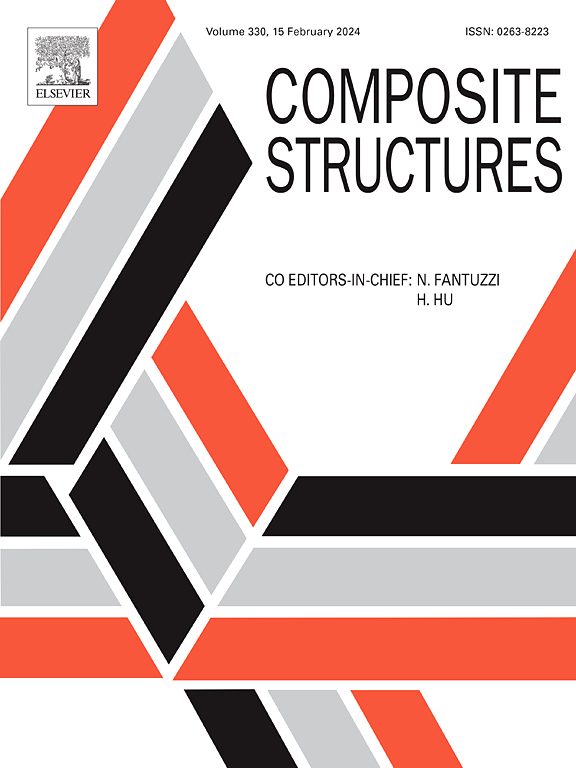A modeling study on composite bolted connections for preload relaxation considering accelerated degradation
IF 6.3
2区 材料科学
Q1 MATERIALS SCIENCE, COMPOSITES
引用次数: 0
Abstract
Composite bolted connections are widely used in aerospace applications with long-term storage requirements, it is essential to analyze and predict their degradation. Existing methods often fail to accurately describe the preload relaxation mechanism under long-term storage conditions, where structural properties and material degradation interact. To address this issue, an accelerated degradation model has been developed to predict the preload relaxation behavior of composite bolted connections. This model considers the variable stress conditions during the relaxation process and the deformation coordination relationship within the structure. By combining accelerated experimental data with optimization algorithms, we can identify acceleration factors, ensure mechanism consistency, and determine model parameters. The model effectively describes the time-varying behavior of preload relaxation under the viscoelastic deformation of composite materials and the accelerated relaxation effects corresponding to different temperatures. It has clear physical significance, reflecting how material and structural parameters influence preload relaxation. Compared with the phenomenon of increasing prediction error over time in other models, the error of the proposed model remained stable within 0.5 % within 500 h, providing a theoretical basis for designing the durability of connections and for conducting accelerated tests.
考虑加速退化的复合螺栓连接预紧松弛模型研究
复合材料螺栓连接广泛应用于需要长期存放的航空航天领域,对其退化进行分析和预测是十分必要的。现有的方法往往不能准确地描述在长期储存条件下的预加载松弛机制,其中结构性能和材料降解相互作用。为了解决这一问题,开发了一种加速退化模型来预测复合螺栓连接的预紧松弛行为。该模型考虑了松弛过程中的变应力条件和结构内部的变形协调关系。将加速实验数据与优化算法相结合,识别加速因素,保证机制一致性,确定模型参数。该模型有效地描述了复合材料粘弹性变形下预紧松弛的时变行为和不同温度下对应的加速松弛效应。它具有明确的物理意义,反映了材料和结构参数对预紧松弛的影响。与其他模型预测误差随时间增加的现象相比,该模型在500h内误差稳定在0.5%以内,为连接耐久性设计和加速试验提供了理论依据。
本文章由计算机程序翻译,如有差异,请以英文原文为准。
求助全文
约1分钟内获得全文
求助全文
来源期刊

Composite Structures
工程技术-材料科学:复合
CiteScore
12.00
自引率
12.70%
发文量
1246
审稿时长
78 days
期刊介绍:
The past few decades have seen outstanding advances in the use of composite materials in structural applications. There can be little doubt that, within engineering circles, composites have revolutionised traditional design concepts and made possible an unparalleled range of new and exciting possibilities as viable materials for construction. Composite Structures, an International Journal, disseminates knowledge between users, manufacturers, designers and researchers involved in structures or structural components manufactured using composite materials.
The journal publishes papers which contribute to knowledge in the use of composite materials in engineering structures. Papers deal with design, research and development studies, experimental investigations, theoretical analysis and fabrication techniques relevant to the application of composites in load-bearing components for assemblies, ranging from individual components such as plates and shells to complete composite structures.
 求助内容:
求助内容: 应助结果提醒方式:
应助结果提醒方式:


